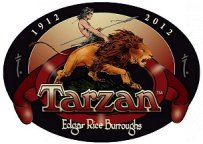
First and Only Weekly Online Fanzine Devoted to the Life and Works of Edgar Rice Burroughs
Since 1996 ~ Over 15,000 Web Pages in Archive
presents
Volume 3393
ERB's John Carter / Flash Gordon Connection I
Pts: I | II | III | IV | V | VI

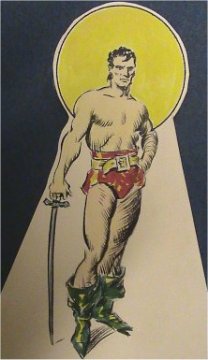
John Carter by JC Burroughs |
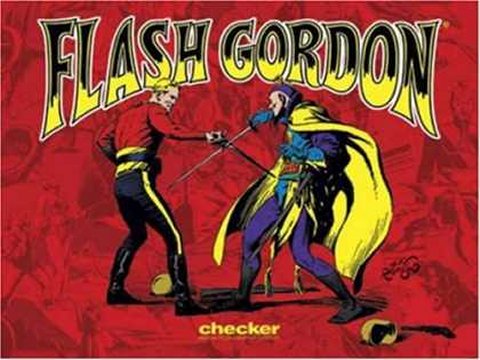
Flash Gordon by Alex Raymond |
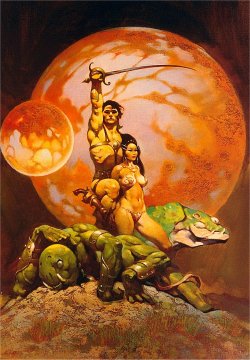
John Carter by Frank Frazetta |



In 1931, Edgar Rice Burroughs urged United Feature Syndicate, the distributors of his Tarzan strip, to consider the addition of another strip based upon his Mars novels. The 1932 response from George Carlin was, "I cannot emphasize too strenuously my own personal feeling that production of the Martian strips would seriously handicap the Tarzan feature." Further correspondence discouraged the "Mars" project and suggested that such a project be put on hold until the Tarzan strip was firmly established. 
THE BURROUGHS INFLUENCEIn 1933, however, the rival King Features Syndicate indicated that they had hired artist Alex Raymond and writer Don G. Moore with the idea of creating a Mars feature strip: ". . . we are interested in the possibility of syndicating a strip built around your Mars stories. We have read the books and we think the adventures of John Carter from the very beginning would make a splendid series provided the right artist illustrated the strips. We think we have such an artist here."
The artist and writer they had engaged were certainly qualified. Raymond had assisted and ghosted the artwork on other popular King Features strips: Tillie the Toiler, Blondieand Tim Tyler's Luck. While Moore, in his role of an Argosy All-Story Weekly editor, had edited and supplied plot suggestions for ERB, as well as for Cummings, Farley, Kline, Leinster, Merrit, et al.
ERB contacted his long-time illustrator, J. Allen St. John, who seemed very interested in taking on the job of drawing the Martian strips. He soon submitted a four-panel art sample based on The Gods of Mars. King Features sent a detailed contract offering 50 percent of gross, but ERB demanded many revisions. He insisted that he maintain all spin-off rights for radio shows, movie serials, TV, Big Little Books, etc. -- and expressed his dislike of the use of speech balloons in the strip panels. Around this time, in October 1933, United Features expressed a continuing interest in developing the Mars strip. After a long delay King Features finally responded to the numerous follow-up letters from ERB and St. John. On January 4, 1934 they wrote: "I am sorry to say that at this writing it seems impossible for us to arrange syndication under terms which would suit you."
Three days later the Flash Gordon Sunday page debuted. As one reads the first 46 Raymond strips which make up part of this ERBzine feature, Flash Gordon's debt to ERB's John Carter adventures on Barsoom should be very obvious: many of the plot lines are lifted from ERB's Mars and Venus novels and Flash is described as being a superb swordsman with powerful earth-man muscles which allow him to make giant leaps.
A year later, Ed Burroughs, responding to questions from United Features, explained the situation in a March 6, 1935 letter: "As to the syndicate that was dickering for the Martian strips, this was the King Features. They approached us, and sample material was sent them which included art work. The New York office okayed everything as well as the terms, but when the idea was submitted to Mr. Hearst for the final stamp of approval it was quickly disapproved, probably because Mr. Hearst felt that a Martian strip could be gotten out cheaper by not having to pay royalties to us. Shortly thereafter 'Flash Gordon' made his appearance in the comics, and this no doubt was the upshot of the matter."
ERB shed even more light on the failed negotiations in his 1937 article for Fortune Magazine entitled "Tarzan of the Apes": "The Burroughs Corporation just missed having another outstanding newspaper strip and page published that would have been second only to Tarzan. A contract was drawn with the King Features Syndicate several years ago covering Edgar Rice Burroughs' famous Martian series of novels featuring John Carter, the first fiction character created by Burroughs, the hero of a series of adventures on Mars that have run into eight novels with sales well up in the millions during the twenty-six years of their life. The contract was ready for signature and was submitted to Mr. Hearst at his San Simeon ranch. It was never signed. Subsequently, Flash Gordon appeared in the Hearst papers; John Carter and his Martian adventures under another name and authorship." This article appeared in a serverely edited version as "Ape-Man Business" in the March 1938 issue of Fortune Magazine. See ERBzine 0276.
Much of the above research material has been gleaned the Burroughs Bulletin article by ERB scholar Bob Barrett. In Mr. Barrett's own words: "I have always enjoyed Alex Raymond's Flash Gordon, but now I, like Edgar Rice Burroughs, believe that Flash Gordon is really John Carter 'under another name and authorship,' and will view it with new perspective, finding it even more entertaining. ~ "How John Carter Became Flash Gordon" (Burroughs Bulletin #60, p.19-26) by Robert R. Barrett

QUOTESAccording to Al Williamson there is a quote from Alex Raymond somewhere saying that he was basically doing John Carter when he did Flash Gordon. And if you read the early Flash Gordon strips it's pretty obvious. John Carter is more of a swashbuckler to me than the others. His prowess is based on his swordsmanship in a culture where swordsmanship is all important. . . . I think there is quite a bit more technology in those stories. Burroughs was one of the very first to have a huge commercial success with this type of series, generating a big fan base in the first generation of science fiction fans, the Ray Bradbury, Forry Ackerman, Jerry Segal generation. So what makes John Carter different is that he was one of the first. Also, his work in general is just more rich, more wild, more primitive than the others. ~ ComicCon Interview with Thomas Yeates ~ Thomas Yeates Tribute in Tarzan.org
Al Williamson: Alex Raymond, as a young kid, read the John Carter books. A friend of mine is doing a book on Alex. He's working with the family and he's got an interview where Alex talks about reading John Carter of Mars and Tarzan by Edgar Rice Burroughs. So he did read Burroughs and was a fan. Interview with Al Williamson ~ ERBzine 0846
"Originally, I wanted to make a Flash Gordon movie, with all the trimmings, but I couldn't obtain all the rights. So I began researching and found where (Flash Gordon creator) Alex Raymond got his idea: The works of Edgar Rice Burroughs, especially his John Carter series of books." ~ SF Review by George Lucas in Science Fiction Review 24, 12/77 ~ ERBzine 0871
One of my earliest recollections is of crouching on the living room rug, peering over my brother's shoulder as he read the Sunday funnies. Of all the features, I most vividly remember Flash Gordon. The splendid men and gorgeous women, all in their form-fitting costumes... the Art Deco cities with their graceful, sweeping vistas and their soaring towers... and of course the beautifully rendered spaceships and Alex Raymond's dazzling imagery of outer space... ~ Master of Adventure: The Worlds of Edgar Rice Burroughs by Richard Lupoff - ERB Biographer and Researcher ~ ERBzine 3048
The primary example of Burroughs' work being utilized by different creators may be found in the Flash Gordon newspaper strip by Alex Raymond. ~ ComixScene Sept.-Oct., 1973 Interview with Richard Lupoff in ~ ERBzine 1109
Particular favorites [in Israel] were spaceman Flash Gordon, who had many adventures with Tarzan and Boy both in space and on Earth where, in a special three-issue adventure, the two stopped an invasion of robots from mars which actually destroyed most of the cities of the world. In the series with Boy, he and Flash had helped destroy an alien armada which threatened Earth after it had already destroyed Venus! ~ Tarzan in the Holy Land series by Eli Eshed: ERBzine 0991
Poor Captain Carter's place in the public eye has long since been usurped by a legion of copycat heroes, from Flash Gordon to Luke Skywalker. ~ Tarzan vs. Tarzan by Frank Blisard ~ ERBzine 0291
Edgar Rice Burroughs remains one of the most popular and influential authors in American literature - not to mention one of the great storytellers of all time. His science fiction tales of Mars, Venus, the Moon and the fictional world of Poloda are the forebears of "Flash Gordon," "Star Trek" and "Star Wars" . . . ~ ERB: The Master Story Teller - John Allen Small ~ ERBzine 1579
Alex Raymond's Flash Gordon which first appeared in newspapers in 1934 was destined to become a movie serial in 1936 but with all this research in place and the active support of Burroughs himself, it looked like John Carter would be the first outer space fantasy hero to grace movie screens. Clampett immediately got to work to put together a test reel of footage and soon animation history would be made. ~ Lost Cartoons: The Animated "John Carter of Mars" by Jim Hill ~ ERBzine 0934
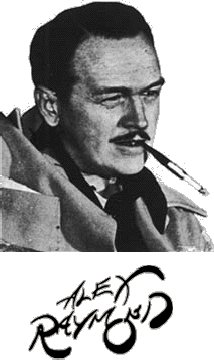 |
|
![]()
JOHN CARTER / FLASH GORDON GALLERY
![]()
|
|
|
|
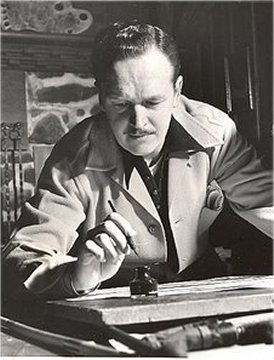
Alex Raymond |
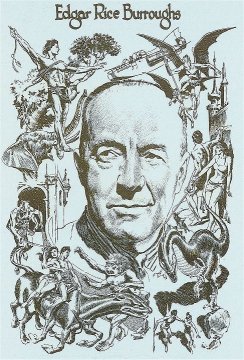
Master of Fantasy Adventure |
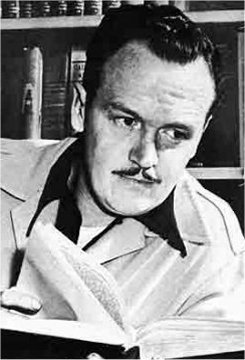
Alex Raymond |
|
|
|
|
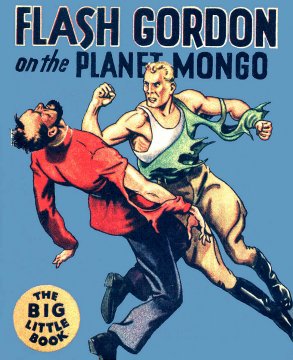 |
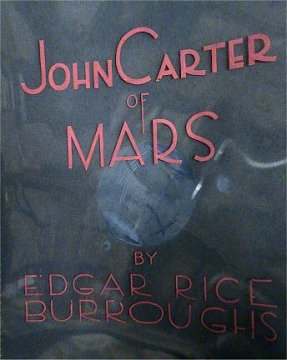 |
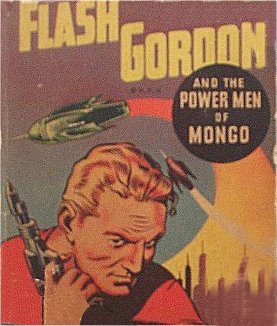 |
| . | . | . |
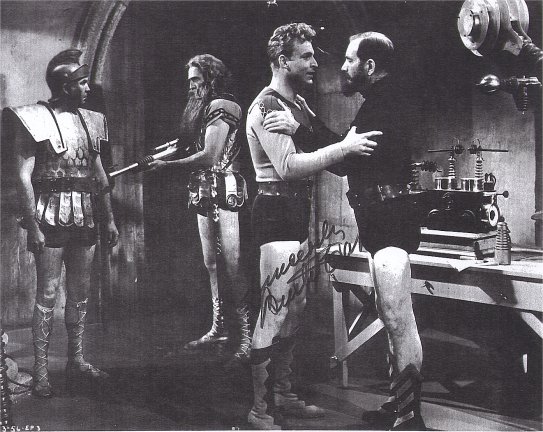 .
.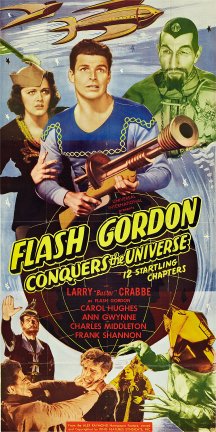
ERB's son-in-law James
"Tarzan" Pierce as the bearded Lion Man
With Buster Crabbe in the original Flash Gordon Serial
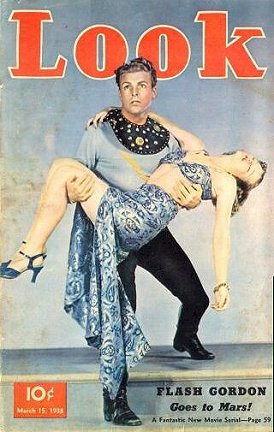
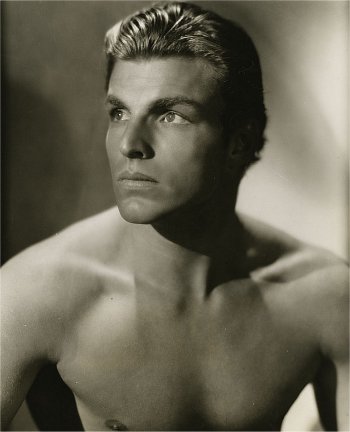
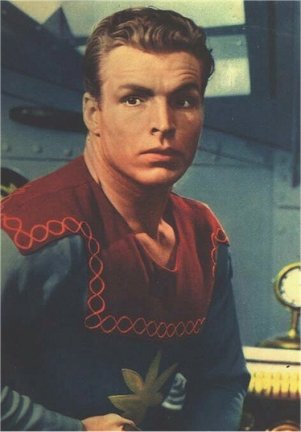
Buster Crabbe as Flash Gordon and Tarzan
See Crabbe as Tarzan in Tarzan
the Fearless
WEB REFS
John Carter
of Mars
John
Carter of Mars Sunday Pages by John Coleman Burroughs
REX
MAXON'S SUNDAY TARZAN STRIP March 15, 1931 ~ September 20, 1931
Rex
Maxon Daily Strips in ERBzine
http://flashgordon.ws/
Today's
Flash Gordon Strip Online
Flash
Gordon Galleries
Planet
Mongo in Wikipedia
Flash
Gordon in Wikipedia
Alex
Raymond in Wikipedia
Flash
Gordon Wiki: On the Planet Mongo
Flash
Gordon Movie Serial in Wikipedia
Alex
Raymond's USMC Art
ERBzine's
Flash Gordon Gallery by Al Williamson
Magazine
Features
Flash
Gordon Video Clips on YouTube
Flash
Gordon Serial Clips
Flash
Gordon Filmography at IMDB
John
Carter's Mars and Flash Gordon's Universe
Flash
Gordon Animated Series on Filmation
Buck
Rogers in the Twenty-fifth Century: The Origin ~ 1939 Radio Show
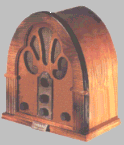
Flash
Gordon Radio Intro
ERB's
Golden Age of Radio
Keefe Studios:
Official Website of Illustrator Jim Keefe
![]()
ERB's John Carter / Flash Gordon
Connection
|
|
|
|
|
|
|

![]()

![]()
BILL
HILLMAN
Visit
our thousands of other sites at:
BILL
AND SUE-ON HILLMAN ECLECTIC STUDIO
ERB
Text, ERB Images and Tarzan® are ©Edgar Rice Burroughs, Inc.-
All Rights Reserved.
All
Original Work ©1996-2011/2019 by Bill Hillman and/or Contributing
Authors/Owners
No
part of this web site may be reproduced without permission from the respective
owners.
